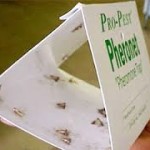This article was first published by TASB Risk Management Fund on February 23, 2021 by Campbell Gill. I am using this as a way for you to take time to review your IPM program and see what needs to be updated at your district.
 Controlling the pest population at your school district or community college isn’t as simple as spraying pesticides. Fighting off annoying critters without negatively impacting the health of your community and the environment requires a delicate balancing act of responsible pesticide use, staff training, and an effective school integrated pest management (IPM) program.
Controlling the pest population at your school district or community college isn’t as simple as spraying pesticides. Fighting off annoying critters without negatively impacting the health of your community and the environment requires a delicate balancing act of responsible pesticide use, staff training, and an effective school integrated pest management (IPM) program.
IPM can be a complex subject rife with specific regulations to comply with and licenses to obtain. Taking time to look at some of the high points of IPM compliance will make your administrative duties that much easier.
What is school IPM?
Traditional pest management leans heavily, if not exclusively, on pesticides to keep pests in check. IPM combines pesticides with safer prevention and control strategies. For example, if you want to keep rodents out of your facilities, you could cut clutter, maintain dining and food storage areas, and remove trash and overgrown vegetation. If rodents manage to get inside, you could control their population by applying pesticides and/or trapping and removing them.
Under the Texas Administrative Code, your organization must designate a trained IPM coordinator to manage your program, which should have these core elements:
- Board-approved policy: Your IPM actions should be outlined in a policy approved by your school board and applied across the organization.
- Monitoring: Your IPM program should define unacceptable pest populations that justify corrective action. Monitor populations on your property, and prepare to manage the risk if they exceed thresholds. For example, your guidelines might call for stricter control measures after you discover four mounds of fire ants.
- Safer strategies: When control measures are deemed necessary, you should choose non-chemical tactics or lower-risk pesticides whenever possible.
- Recordkeeping: Document everything you do for your IPM program, including your work orders, pest control use records, application history, third-party service records, and any pesticide complaints you receive.
- Education: Your staff needs to be consistently educated and informed about their roles in the IPM program.
Go deeper
IPM is a dynamic process with numerous rules and regulations you’ll need to keep in mind. Below are some of the important overarching elements.
Licensing
School staff, vendors, and anyone else applying pesticides, including pesticide devices, on school property must be properly licensed. The Texas Department of Agriculture (TDA) requires different licenses depending on where and how you use pesticides. The Texas A&M AgriLife Extension School IPM website breaks down licenses and their requirements.
Incidental use
IPM incidental use regulations allow your coordinator to train another employee to treat occasional pest issues considered emergencies. Examples include fire ants in a classroom or wasps next to an exit door. Your IPM coordinator will have to follow many steps to comply with incidental use regulation. Steps include, for example, training designated employees on the incidental use fact sheet and teaching them to safely apply pesticides according to their labels and safety data sheets. You also need to complete a post-application form to notify TDA see this document for an example Pesticide Application Record for Incidental Use
Documentation
TDA requires you to keep thorough records of all your pesticide uses. Everything needs to be documented, including location, time of chemical application, amount used, specific mixing rate, target pest, and the license numbers of anyone who used the chemicals. For outdoor pests, you will need to document environmental factors such as wind velocity and outdoor temperatures. You’ll also need to provide documented justification whenever you use certain powerful pesticides. Failing to maintain consistent documentation is a common issue in TDA school inspections, so make sure you keep up with your paperwork.
Integrated Pest Management guidance, education, and training
IPM is a comprehensive process that comes with a lot of paperwork to complete and regulations to follow. Information and resources are available through the Texas Department of Agriculture,
Texas A&M AgriLife Extension, and the Environmental Protection Agency.

 .
.